Graham Reid | | 20 min read
Paul McCartney : Plastic Beetle (Liverpool Sound Collage)
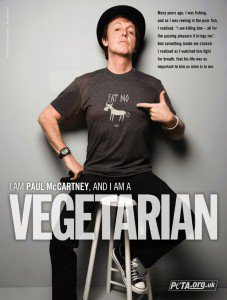
For a man pronounced dead by radio DJs back in the late Sixties, Paul McCartney (or his doppelganger) has has a long and productive life. And musically diverse, as the Nineties proved: classical, pop-rock, balls-out rock'n'roll, acoustic sets, experimental electronica . . .
Not a bad track record late in a long career. And in the new millennium he showed no signs of slowing down, either on the touring front or in the studio. He might have resorted to a rather bad dye-job on the mop-top and looked tired around the eyes (if nothing else his wife of almost 30 years had died in '98 we must remind ourselves), but creatively he dragged that spirit of the Nineties along into a new decade . . . but with little initial commercial success.
Maybe by this time there was just too much (and too much diverse) McCartney in the world? Fortunately some critics were still listening and pointing to his most interesting albums, of which there were a few . . .
 Liverpool Sound Collage (2000)
Liverpool Sound Collage (2000)
Now this is how to kick off a decade and confuse those who might have written you off as an irrelevance.
McCartney's most ambitious, inventive and most overlooked side-project to date was this, for which he let loose himself, Super Furry Animals and Youth on studio tapes and other Beatles/McCartney material to create a remarkable cut-up, snatch'n'sample collection of five very different pieces.
It was nominated in the best alternative album category at the 2001 Grammys.
Although the category was won by Radiohead with Kid A (it included the likes of Beck, Fiona Apple and the Cure) the Liverpool Sound Collage was by far the most "alternative" album up for consideration. McCartney was robbed, albums don't come much more alternative than this. And certainly not from sixtysomething stadium-poppers like him.
This even more ot-there than he would do later with the Twin Freaks album of 2008 (see below) in which he only kept a watching brief. Here he was a hands-on inventor and collaborator for the most part. His ears and instincts were excellent and it knocks Lennon's Revolution #9 sideways. It's also possible that we can hear elements from the long-lost sometimes-promised Beatles improv Carnival of Light in here.
Using the studio as an instrument he explored sonic effects, variable tape speeds, Beatles studio chatter, voices of people in the street, bits from his Oratorio, rumbling bass and backwards drums . . . Alarmingly good in places, although ironically the Super Furry Animals' 17 minute sonic experiment on the piece entitled Peter Blake 2000 is the most clever.
Coming between a classical album and a double album pop-rock retrospective, it not only sounds nothing like the work of the man who did either, it sounds much more like an art school project by someone on the cutting edge of sonic collage.
Quite extraordinary.
Free stream here.
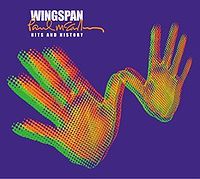 Wingspan, Hits and History (2001)
Wingspan, Hits and History (2001)
Interestingly, despite the title, this double disc was solely credited to McCartney although obviously it drew from Ram (originally credited to Paul and Linda McCartney) and Wings. The hits disc is largely predictable, but the other disc was made up of some of his favourites which he had and would continue to return to either in concert or as source material in side projects (Let Me Roll It, Maybe I'm Amazed, Junk, Every Night).
The US edition at last featured on a collection Wings' exciting live version of Coming Up.
It sold remarkably well (people didn't need reminding how huge Wings had been) and the tie-in television doco of the same name doubtless drove sales.
Free stream here.
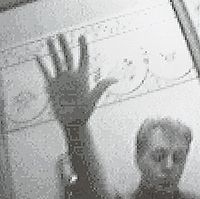 Driving Rain (2001)
Driving Rain (2001)
The urgency which drove his excellent Run Devil Run album prompted a faster working pace on this album, but unfortunately the results weren't anywhere near as compelling.
He'd met Heather Mills and, being in love again, that feeling infuses (some might say infects) the lyrics: so what you get are words as lightweight in places as that McCartney solo debut of '70 but with none of its low-key charm.
However on tracks like the weirdly psychedelic She's Given Up Talking (with disembodied voices, swirling David Gilmour-like guitar from David Kahne) he conjures up some real magic, and he lets himself go on a love song with balls and blistering guitar on About You. Back in the Sunshine Again is a jagged, almost bluesy rocker which belies its lyrics, very cool indeed. Heather to his new love is interesting in a Band on the Run/Broad Street way.
Riding into Jaipur with tamboura was a rare (and too infrequent) digression into a profitable area of Indo-influenced drone-rock. You always wonder why he never did more in this area. Didn't want to impose on the territory of George Harrison, who died later this year?
His pop-smarts come through on the title track where he unleashes his more edgy vocals (but on lyrics as demeaning as "1-2-3-4-5, let's go for a drive" etc), but love ballads like I Do and Your Loving Flame always remind of that scene in The Rutles where his parody character hammers piano chords for a bored wife while singing "I love you, oooho . . . oohoo, it's you I love . . ."
So songs like Magic ("it must have been magic, the night we met") are ill-becoming the man who wrote Eleanor Rigby, She's Leaving Home and so on. Too many like that and, as in the Eighties, the arrangments attempts to cover the manifest lyrical and melodic weaknesses.
As so often in his career, he needed an editor or someone to say, "No!"
There was a hidden track which was fiery and controversial: On 9/11 McCartney, sitting in a plane on the tarmac in New York, saw what happened at the Twin Towers, and righteously enraged he wrote Freedom as a gut response. It was too late to get it acknowledged on the album cover which was already in print, but he insisted on putting it at the end of the album: it was recorded live in New York and polished up in the studio.
It is lyrically simple -- "this is my right, a right given by God, to live a free life, to live in freedom, talking about freedom, I will fight for the right to live in freedom" -- but in the context of the year and the times (and with stinging guitar) is was highly effective, especially for the American audience which seemed to care more about him than his own country at this point.
Didn't redeem a fair-to-middling album however.
.
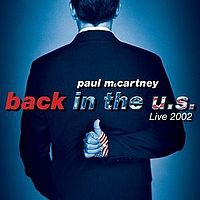 Back in the US (2002); Back in the World (2003)
Back in the US (2002); Back in the World (2003)
Although it is easy to be slightly cynical about McCartney's willingness to deliver yet another live album after yet another tour, you have to also concede that it is remarkable he has remained in such great voice over the decades.
On these two -- which came with a slightly different track listing for Back in the World -- he covers a lot of Beatles territory (always smart to deliver songs he hadn't previously on live albums, here Hello Goodbye, Carry That Weight and others) plus his Wings-era rockers (Jet, Let Me Roll It, C Moon) as well as tribute to George Harrison (he does Something on ukulele, Harrison latter years instrument of choice) as well Here Today for John Lennon.
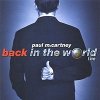 Unsurprisingly the US double disc sold extremely well, although ironically the World version didn't do as much chart damage in the world, except in the UK.
Unsurprisingly the US double disc sold extremely well, although ironically the World version didn't do as much chart damage in the world, except in the UK.
To hear McCartney belt through All My Loving and I Saw Her Standing There with boyish enthusiasm, or play Eleanor Rigby, The Fool on the Hill and Yesterday is always going to be marketable. And, when you think about it without wearing your cynical hat, quite remarkable.
But these albums are better than your finely honed cynicism might allow. The man, as he proved on Run Devil Run, can rock.
Free stream here
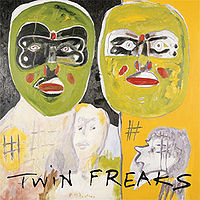 Twin Freaks (2005)
Twin Freaks (2005)
There had really been nothing quite like this in McCartney's broad catalogue, and it wasn't in it for long. This double vinyl with cover art by McCartney, who was starting to have his own exhibitions by this time, was almost immediately deleted or snapped up.
Pity.
This was McCartney's material remixed and mashed by DJ Freelance Hellraiser, aka Roy Kerry, and it is an exceptional and interesting collision of disparate McCartney tracks in the manner of an even more weirdly
constructed sound collage, doubtless inspired by the Beatles Love remix album which by this time was well underway and would appear the following year.
McCartney may have had less of a hand in this than we might think. He certainly gave permission for use of the material and acted as executive producer, but how much time he spent in the studio is debatable. But it may be that he guided it fairly closely -- that would be in his controlling nature -- and if so he, as he so often does, went back to some of his very early Seventies albums (McCartney, Ram, Wildlife) for source material . . . but here mashed them with samples from elsewhere.
The Long Haired Lady track (originally from Ram) for example hooks in the guitar from Oo You (off McCartney); and Oh Woman Oh Why (originally the B-side to Another Day) incorporates Band on the Run guitars, Venus and Mars vocals and bass from his oddball Loup off Red Rose Speedway.
Live and Let Die is just a looped sample of a few seconds over disembodied voices and guitars from other albums.
As Carl Magnus Palm wrote: "It doesn't make the mistake of trying to force McCartney's music into a dance
music environment, but nor does it walk on eggshells around his reputation as a
music legend. It's more a like a confrontation between Roy Kerr and the Paul
McCartney archives: it transcends the format of the traditional remix album to
create a truly inspired collage of sounds, musical riffs and rhythms".
Perhaps not an official entry in the McCartney discography, but like Thrillington in '77, it couldn't have existed without him and his music.
 Chaos and Creation in the Backyard (2005)
Chaos and Creation in the Backyard (2005)
Curiously, some hailed this as a return to form (another?) but in many places it doesn't stack up: the wimpy ballads and thanks to Heather for making him happy again sound remarkably twee and the musical embellishments again try to cover up the weaknesses.
Producer Nigel Goodrich (Beck, Radiohead) was brought in and apparently gave McCartney a kick for some of his less acceptable lyrics and music. But he might have needed to kick a wee bit harder.
However a lot of people liked at and it was nominated for a number of Grammys and did well in the charts in the UK, largely on the strength of its two best songs, Fine Line and the Beatlesque Jenny Wren. There are some fine tracks, not the least the hidden one after Anyway which hints at The Fireman's style.
The song Friends to Go was apparently inspired by the late George Harrison's easy style (it sounds it) and English Tea is delightful slice of pastoral whimsy with a string ensemble and takes McCartney back to the Penny Lane period.
So some good stuff, just not enough of it. Nice cover though, a shot of "our kid" when he was teenager by his very talented brother Mike (McGear) McCartney.
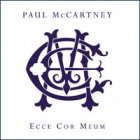 Ecce Cor Meum (2006)
Ecce Cor Meum (2006)
Sorry, but you are on your own on this one, another classical album. This time an oratorio in four movements which he had been commissioned to write, but which was delayed by the death of Linda, and doubtless the relationship with Heather.
This was his most critically successful and popularly received album in the genre and he picked up nice notices (best album at the Classical Brits) and significant sales (number two in the US classical charts) so it seems there might have been something going on there.
But you might wonder just how much of the Latin text, let alone the orchestration, Mr McCartney was deeply involved with.
 Memory Almost Full (2007)
Memory Almost Full (2007)
From the title to the reflective nature of many lyrics this -- McCartney’s 21st post-Beatles release, not counting live albums, classical digressions, compilations etc -- could be read as his public swansong.
He considers his life on the energetic That Was Me; in an aching falsetto You Tell Me he wonders about those perhaps mythical summers of yesteryear; and the poignant if lyrically clunky The End of the End asks that “on the day that I die I’d like jokes to be told.”
In fact these songs were written in 2003, which placed them in a period of happiness with his then-new wife Heather Mills -- the subject of the irritatingly twee See Your Sunshine, and the yelping Gratitude. Both are heavily embellished but at core sound like knock-offs of the kind which have always burdened his solo work, proving again he still needs an editor. Although their inclusion after their break-up shows McCartney was not one to waste a useful idea.
Dance Tonight is a polite rocker driven by mandolin, the eccentric Mr Bellamy could have come from Magical Mystery Tour (when he was at his most workmanlike), Vintage Clothes is a jaunty rocker, and the breezy Feet in the Clouds crams a lot of musical ideas into three and a half minutes. All interesting more than essential however.
Again solo McCartney is irritatingly uneven but at its best -- the blistering Only Mama Knows and House of Wax especially, which recalled that vital period in the early Seventies -- this proved he could still sometimes shoulder-tap his muse. And Paul Weller rightly considers You Tell Me to be "up there with his greatest work. The lyrics are brilliant and it's got Macca's fantastic melodic sense".
The album actually did very well, largely perhaps because of the deal he signed with Starbucks' Hear Music imprint which guaranteed not only massive airplay in Starbucks stores on the day of release but also huge publicity.
More people heard or knew about this McCartney album than had in many years.
Think about it: He was 65, he'd done 21 studio albums . . . plus a few live ones, compilations and so on -- as well as the whole Beatles and Wings bands . . . and no one could probably name his previous album.
People had stopped listening because there was just so much Paul McCartney music already in the world.
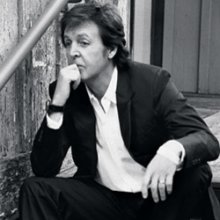 He was free of his EMI contract and could sign with any record label in the world. But he chose Starbucks? He went with people who sell coffee?
He was free of his EMI contract and could sign with any record label in the world. But he chose Starbucks? He went with people who sell coffee?
Why?
The Starbucks/Hear Music deal meant his album was played in every Starbucks all over the world on the day of its release. That is 10,000 outlets in 29 countries.
An estimated six million people heard it.
It immediately sold 500,000 copies. This is him looking happy about that!
 Electric Arguments (2008)
Electric Arguments (2008)
This new Fireman album was a major departure from the electro-ambient sampling of its predecessors on many levels: it is the first to acknowledge McCartney and Youth on the cover; the first to have McCartney vocals prominent (the opener is a throat-searing slice of crunching boogie rock closer to the White Stripes live and reminds you this man delivered I'm Down); and it is also the first to get serious media attention.
Plaudits came thick and heavy: Zane Lowe at BBC Radio 1 called it "just awesome"; Pitchfork spoke of it being "vamping, Zeppelin-esque"; Clash called it "a staggering collection of timeless adventures that touch on the best aspects of today's more leftfield sounds".
Maybe. It certainly starts in fine fashion but almost immediately becomes (an admittedly leftfield) McCartney album with Two Magpies which sounds like an oddball version of Blackbird and Macca's music hall tendencies in alt.folk mode.
But although wobbly (Light From Your Lighthouse is knock-off campfire-country processed into light electronica) there's quite a lot going on here: Sing the Changes is a big and uplifting U2-framed ballad (suitably scratched up however, would work on alt.radio) and Travelling Light is weirdly pastoral.
The final half is the strongest and most interesting: Lifelong Passion and Is This Love? are dreamy Indo-alt.folk; Lovers in a Dream is suitably clouded in the whiff of the jazz cigarettes he favours; Universal Here, Everlasting Now sounds like it has drifted in from a Floyd-like late Sixties Happening with oil-lamp projections (and could be the title of a new Oasis album!); and the closer has backward guitars, incense-infused bass lines and ambient textures . . .
There's even a hidden few minutes of electro-wooshery two minutes after the final track. Another one for the conversation pit.
 Electric Arguments despite its alt-outsider origins is unfortunately still a Paul McCartney pop album in too many places: Optimism is endemic; the ordinary Sun is Shining could have come from any of his
solo albums in the past two decades; Dance 'til We're High is a Spector-lite
soft-hearted ballad . . .
Electric Arguments despite its alt-outsider origins is unfortunately still a Paul McCartney pop album in too many places: Optimism is endemic; the ordinary Sun is Shining could have come from any of his
solo albums in the past two decades; Dance 'til We're High is a Spector-lite
soft-hearted ballad . . .
But mostly this was a more interesting McCartney than we have been used to when he'd just been being Paul McCartney.
In his late 60s you have to say it: Youth becomes Paul McCartney.
Free stream here.
 Good Evening New York City (2009)
Good Evening New York City (2009)
After this decade of exceptional diversity on disc it seems a shame that McCartney should end it in such a predictable manner: a double live.
This however has been his pattern: live albums have been spotted into his career with alarming frequency (in time for Christmas or at the close/start of a decade) and that Beatles back-catalogue has increasingly taken up the bulk of the set.
This one recorded over three nights at the new Citi Field Stadium (next to the demolished Shea Stadium where the Beatles famously played in '65 and unwitting launched stadium rock) has 20 out of the 33 songs pulled from the Beatle Years. It including his tributes to Harrison on Something (starts on ukulele and then gets the full treatment) and to Lennon by working in Give Peace a Chance into A Day in the Life (and I Saw Her Standing There with Billy Joel).
He kicks off in terrific style with Drive My Car (from Rubber Soul) and Jet (Band on the Run) and then one of the best from his last McCartney studio album Memory Almost Full, Only Mama Knows.
When McCartney rocks out there is still no denying the power of his voice (later he also delivers his largely overlooked classic Little Richard moment with I'm Down) and although he has lost a little in to top and bottom he can still belt them out with exceptional power.
His weaknesses are more revealed in the ballads (The Long and Winding Road, Blackbird) but he delivers a wonderfully moving treatment of Here Today (written for Lennon after his murder) and a very persuasive A Day in the Life (with perfect Ringo drum fills from whomever, the band go uncredited on the cover).
The DVD is of course not only state-of-the-art film and sound (mixed by Geoff Emerick) but lets you get a sense of what an event this was: he mentions the Beatles at Shea a couple of times and when they do I'm Down it is intercut with the Beatles playing it there; he actually chokes up doing Here Today; there is footage from the Beatles Rock Band game; Billy Joel gets a massive hometown welcome (he had closed Shea and Macca had joined him onstage then); there are cutaways to the massive and enthusiastic crowd which crosses all ages; Live And Let Die is accompanied by a spectacular fireworks display . . .
Stunning. And McCartney -- who may be wearing a truss? -- gives it his all.
For the most part he and his musicians keep things faithful -- although they slip in a nod to Hendrix onto a blazing version of Let Me Roll It. They also extend -- in stadium-pleasing style -- I Got A Feeling and Paperback Writer.
And his Sgt Pepper coda segues into the mini-suite of fragments at the close of Abbey Road and leads inevitably to . . . . The End.
As always he includes Beatles material which he hasn't offered on live albums before (I don't think Helter Skelter, I'm Down or Got To Get You Into My LIfe have appeared previously) but largely this covers some very familiar ground, much of it on his 2002 live outings.
That said, as with all Macca live albums, he still delivers quite a punch beyond nostalgia.
Free stream here.
Another decade ends. And a new one begins? With . . . another swerve.
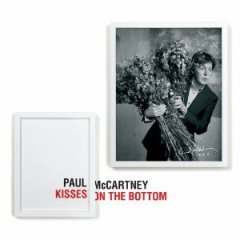 Kisses on the Bottom (2012)
Kisses on the Bottom (2012)
The distance of time allows us an even more objective view of the Beatles' remarkable and singular career, and the diversity of their songwriting.
It is hard to imagine a pop band (She Loves You) would go on to write some of the most self-contained psychedelic pop (Strawberry Fields Forever), let alone a band which would write serious music (Eleanor Rigby) would also do children's songs (Yellow Submarine, All Together Now) and almost single handedly invent heavy metal in '68 (Helter Skelter).
If Lennon often looked inside himself (Help, In My Life) and at his surroundings (Being for the Benefit of Mr Kite drawn from words on a poster, Lucy in the Sky with Diamonds from a picture his son drew), McCartney was almost nostalgic in that he looked back to the musical styles he grew up on, like the music hall tradition around the family piano for When I'm 64 (the music written when he was about 16, the words a decade later) and Maxwell's SIlver Hammer.
So when solo Lennon did his look-back album it was only as far as to songs by Little Richard, Buddy Holly, Larry Wiliams and others of his teenage years (for Rock'n'Roll in '75).
It is no surprise that for this look-back album, McCartney goes even further, to those songs he heard as a kid and which were doubtless played by his parents. Just as Ringo did with Sentimental Journey (in '70), McCartney goes to that songbook of music which includes Accentuate the Positive, Bye Bye Blackbird, The Glory of Love and other standards.
The Fats Waller song I'm Gonna Sit Right Down and Write Myself a Letter contains the line which gives the album its title. And Waller pops up again on the sprightly My Very Good Friend The Milkman.
And this being McCartney, he can call on the best to play on this easy listening but very pleasant collection. Here are Diana Krall and her band, producer Tommy LiPuma, Eric Clapton (notably on Get Yourself Another Fool where he brings a bluesy and warm refinement), Stevie Wonder and others. And some of it was recorded in the famous Capitol Studios in Los Angeles with Grammy-winning New Zealand-born arranger Alan Broadbent writing some charts and conducting the London Symphony Orchestra on others.
The sole originals, the gentle My Valentine (which sounds like a newly minted jazz ballad standard) and Only Our Hearts fit in seamlessly alongside pieces like the beautifully orchestrated Always.
McCartney has a fine sense of timing (listen to his slow, behind the beat treatment of Bye Bye Blackbird) and the quiver of age which is in his voice (he would be 70 later that year) actually suits some of these frequently wistful lyrics about the passing of love, memories and past hurts.
None of this is remotely relevant to anything in contemporary music, his own pop career or even has much in common with similarly conceived projects like Rod Stewart exploring the Great American Songbook.
Some might say this is a vanity project (Ringo's excuse was that he did Sentimental Journey for his mum) and that may be so.
It is however, undeniably pleasant, beautifully crafted and arranged, his two new songs (there is a third on an expanded edition) are genuinely lovely ballads -- I guess the new wife got her song in My Valentine -- and as a sentimental journey it is . . . intimate and quite nice.
This is late night listening for downtime, and more specifically perhaps, one for aging baby boomers who may also have grown up hearing these songs at mother's knee.
Free stream here.
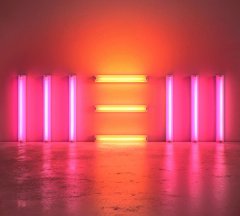 New (2013)
New (2013)
His previous pop-rock album Memory Almost Full six years previous included songs that seemed to be farewells or self-penned eulogies (“On the day that I die I'd like bells to be rung . . .”), but this one by 71-year old McCartney comes with a title that exudes capital letter optimism and in a cover radiating assurance.
Working with smart young producers (Paul Epworth who gets co-write credits on three songs, Mark Ronson, Ethan Johns and Giles Martin, the latter two sons of Beatle producers), the material gets snappy sonic treatments. The slinky layering of vocals and guitars on Appreciate and the simple but lovely Looking At Her (presumably for his new wife) come off like pop versions of his electronica work with Youth (as The Fireman). The menacing, whispery verses on Road belie the song's optimism and nudge it towards economic prog-rock, and the slightly-delic Queenie Eye could be from Magical Mystery Tour.
Given his long career it's impossible not to make such references, and he often invites them.
As before, he is reflective, notably on the wistful acoustic ballad Early Days where his voice cracks with emotion as it references his youth with John Lennon (“two guitars across our backs/hair slicked back with Vaseline”) and serves notice to Beatle biographers: “I don't see how they can remember when they weren't where it was at.”
On My Way Work is a less buoyant cousin to Penny Lane and the title track adopts a familiar hand-clap and piano-led rhythm (with horns which allude to Got To Get You Into My Life). It comes with an equally Beatle-like coda with nods to the Beach Boys. These are all fine songs, and he cracks a decent stadium pleaser in the singalong Everybody Out There.
However the stridently urgent opener Save Us sounds like a weak Wings song, I Can Bet is either a superior Rutles track or a lesser song from Red Rose Speedway. The final uncredited song Scared is simple piano ballad although hardly a masterwork, but ends this diverse and interesting album on gentle note.
When McCartney writes of love as he mostly does, he either nails it by understatement (Looking at Her) or comes off a sentimentalist (Hosanna which, despite tape loops and vocal effects, is pretty lame). But his autobiographical songs are consistently interesting.
When he's at his best, just over half the 13 songs here, you have to admire his craftsmanship, and that he can still write a song which says something . . . and comes with a pop hook.
And sometimes not as with . . .
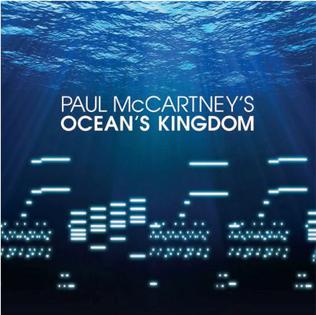 Ocean's Kingdom (2011)
Ocean's Kingdom (2011)
This was McCartney's score for a ballet -- his fifth classical album -- which was commissioned by the New York City Ballet and performed by the London Classical Orchestra.
It is a romantic series of movements which met with typically mixed reviews and more than a few critics pointed out its aural references which seemed to range from the classical tradition to a bit of music hall and Broadway.
And movie soundtracks from the Forties.
Some nice stuff but as with all his classical work, McCartney was in a world where he was referencing rather than breaking any new ground. Other than for himself.
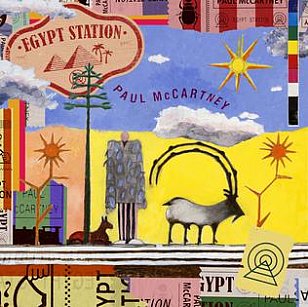 Egypt Station (2018)
Egypt Station (2018)
Back on the pop track, this one came -- as so many of his albums have -- with advance notices that it was Paul really on point with a quasi-concept album.
As always, McCartney is the master of clever promotion (think of that Starbucks/Hear Music association) but rather than once again dropping hints that we might get to hear the Beatles' lost track Carnival of Light (which is rubbish according to those who've heard) he did a Carpool Karaoke session which went viral.
Everyone knew he had this new album out.
Elsewhere reviewed it at length here and noted that it was one of the few albums to feature his own artwork, which we looked at here.
This is what we concluded: "That, as with every solo album, he delivers some great melodies, a few fine songs, some convincing old school rock'n'roll, a couple of soft-centred ballads and a bit of filler . . . but sounds like he's still making an effort.
"Naysayers will find enough to criticise, others will find enough to enjoy.
"As always, it's enough to give Paul McCartney the benefit of the doubt next time."
.
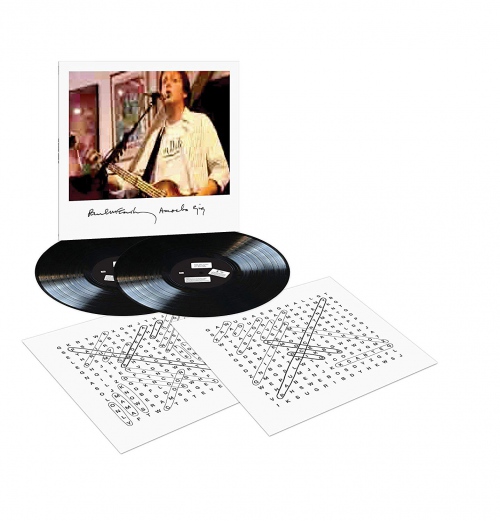 Amoeba (2019)
Amoeba (2019)
And this was more like it. In 2007 McCartney and his band played a surprise show at Amoeba record store in LA (Ringo in attendance) which was recorded but went unreleased at the time.
It juggled Beatles' songs (Drive My Car a knock-out) and very old and more recent solo material along with a cover of Matchbox.
It arrived in one of his reissue sets and was well worth it. Elsewhere reviewed it here.
It's like an official bootleg of the finest kind.
And a new decade beckoned . . .
.
There is more about Paul McCartney's long career at Elsewhere starting here.

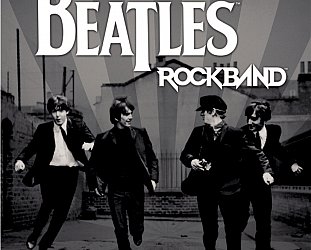
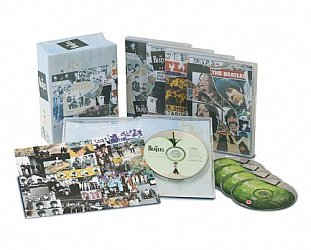
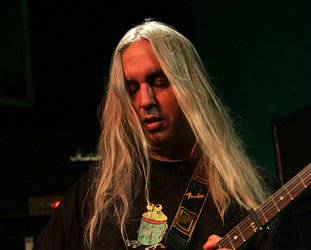

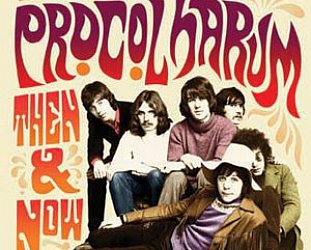
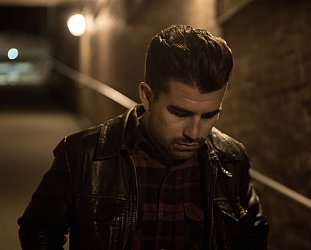
post a comment